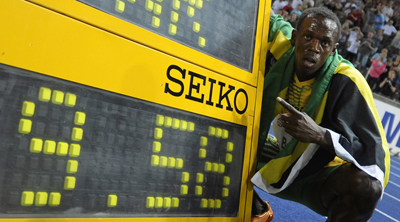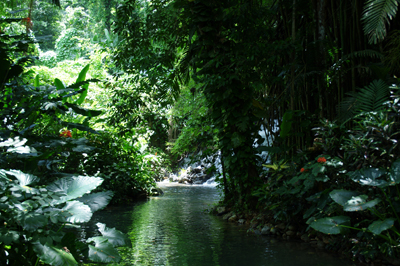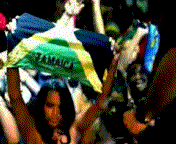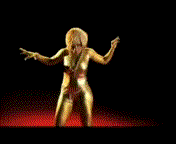Kudos to the
Jamaica Gleaner for making a number of significant historical stories in Jamaica available online for the citizens of the world to see. The Jamaica Gleaner calls it
Pieces of the Past. Here are ten stories from the collection:
On June 7, 1692, after winding up his morning prayer service, Dr. Emmanuel Heath, the Anglican rector in Port Royal, left St. Paul's Church and walked to a nearby tavern. There he met his friend John White, who was president of the island's Council, and the two men got to chatting. Soon goblets of wormwood wine were brought out and White lit his customary pipe of tobacco. Before it was outed and the wine drunk, the floor suddenly began to rumble and shake. "Lord, Sir," the Rev. Heath asked his friend, "what's this?" (Gragg, 2000).
Full story…The Great Exhibition of 1891The Exhibition itself was the dream of native Jamaican A. C. Sinclair. One of the compilers of the annual Handbooks of Jamaica, Sinclair was inspired by the 1851 Great Exhibition at London's Crystal Palace. He tried in vain for many years to drum up support for his ambitious project. When Sir Henry Blake arrived as Jamaica's new Governor in March 1889 Sinclair managed to persuade William Fawcett, director of gardens and plantations and chairman of the Institute of Jamaica (IOJ) to help him present his cause to Governor Blake.
Full story…The Story Of Spanish TownOn the morning of May 10, 1655 two Spanish fishermen said to be out searching for turtles off Port Morant looked up and in shock saw a fleet of 38 ships with large cannons moving towards them. The British had arrived. Turtles forgotten, the fishermen spread the word and messengers set off for Villa de la Vega to warn the settlers. Close to 9000 men were said to have disembarked from those 38 ships † some 3000 more than the actual population of the island at the time. The capital city fell within days. Yet when the British realized that many Spaniards had fled to Cuba taking their valuables with them, they burned many buildings in anger. Much of Spanish Town was later rebuilt but during that time Port Royal acted as the unofficial capital, and the pirates based there protected the island from invasion until the devastating 1692 earthquake.
Full story…Jamaica's Botantical GardensWhen Queen Isabella of Spain asked Christopher Columbus to describe the island of Jamaica, the famed explorer is said to have struggled to find words to do its beauty justice. In attempting to describe Jamaica's terrain, Columbus is said to have resorted to fashioning hills and valleys out of table napkins as a way of explaining Jamaica's varied terrain that includes numerous sandy beaches, rivers and mountain peaks. To Columbus, the island, although lacking in gold, was "otherwise a paradise and worth more than gold." (Walker, 1992, p. 247). The island's ecosystem embraces tropical, sub-tropical and temperate plants. Indeed, a large proportion of Jamaica's flora and fauna can be found nowhere else in the world. Research has indicated that although the native vegetation of the island was almost all forest, with some marshland interspersed, today Jamaica has more than 3,000 different kinds of native flowering plants, of which 1,000 are endemic and over 200 of which are different species of orchids. For this reason, Jamaica is considered a horticultural paradise.
Full story…Birth of IndependenceFrom Savannla-La-Mar to Morant Bay, from Above Rocks to Port Maria, as the clock struck midnight on August 5, 1962, the strains of our national anthem were heard for the first time while Union Jacks were lowered and the Jamaican flag unveiled.
Full story…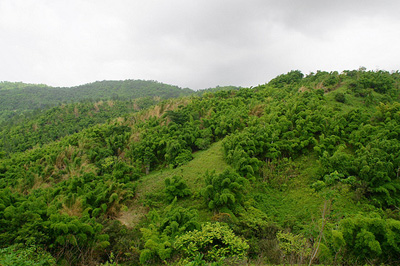 Jamaican Healer And War Heroine Mary Seacole
Jamaican Healer And War Heroine Mary SeacoleMary arrived home in time to encounter a full scale outbreak of yellow fever (a contagious disease that causes yellowing of the skin and a black vomit). She set to work immediately, trying to save and/or comfort as many as she could. Not long after, in 1854, England declared war on Russia, allying with France who was engaged in a territorial dispute with Russia over holy sites in Jerusalem and Nazareth. Mary learned that many of the officers she had treated over the years had been sent to the Crimean front to serve. The Crimea is a peninsula that includes the extreme Southeastern Ukraine and is bounded on the south and west by the Black Sea. Mary's greatest wish, she said, was to work where the sword of bullet had been busiest, and pestilence most strife. So at fifty years old she decided to go to England, committed to finding her way to the Crimea no matter what.
Full story…Claude McKay: Jamaica's Poet Laureate 1890 – 1948Festus Claudius McKay was born in Clarendon in 1890 to Thomas and Hannah McKay, farmers. The youngest of eleven children he would go on to become one of the leading figures of the 1920s American cultural movement known as the Harlem Renaissance. From an early age he was an avid reader and he began writing poetry at the age of ten. As a teenager, McKay was apprenticed to a cabinetmaker after the trade school he was supposed to attend was destroyed by the 1907 earthquake. In that same year, something far more propitious occurred -- he acquired a mentor by the name of Walter Jekyll. Jekyll, an Englishman who became an avid collector of Jamaican folklore, encouraged McKay to write in Jamaican dialect.
Full story…Martin Luther King Jr. visits Jamaica (June 20, 1965)Professor Patrick Bryan, then a graduating student in liberal arts and now a professor of history at the UWI, remembers that Dr. King may have spoken for close to 40 minutes but that it seemed like five. "It was an incredible experience to hear so strong and commanding a speaker ¬ it was as if you were entranced when listening to him," Prof. Bryan added. "He used no notes and talked without a hitch."
Full story…The State Visit of Emperor Haile Selassie IThe heat that rose from the tarmac of Kingston's Norman Manley International Airport was nothing compared to the level of expectation that was seeping through the thousands gathered on the tarmac that 21st day of April, 1966. The day was declared a public holiday in honour of the Emperor and people had started arriving from Wednesday night from places near and far, to form the largest crowd to have ever assembled at the Norman Manley International Airport. They came to the airport any way they could ¬ by car, by truck, by bus, by bicycle, by foot. Drum beats and chants were heard almost non-stop, providing an almost hypnotic rhythm. The smell of ganja wafted through the air completing a welcome unprecedented in size and expectation for the Emperor on his first state visit to Jamaica.
Full story…Simon Bolivar: El LiberatadorWhile in Jamaica, Simon Bolivar wrote the now famous "Letter from Jamaica" in which he expressed his ideas for republican government and Latin American unity. Widely recognized as an important political doctrine the letter was actually titled, "Reply of a South American to a Gentleman of this Island." It was Bolivar's lengthy response to a letter he had received from an unnamed Jamaican who empathized with Bolivar's struggle for South American liberation and indicated a desire to learn more about the politics and people of each South American province. Specifically, the Jamaican Gentleman asked Bolivar to explain such technicalities as whether each province desired a monarchy or a republic or to form one unified republic or one single monarchy. This sparked the Spanish American patriot and general to launch into his treatise an extensive description of the history of the different provinces (including the present-day countries of Venezuela, Columbia, Ecuador, Bolivia and Peru) and an exploration of his own ideas for their political futures.
Full story…Please make time to read all the stories from
Pieces of the Past here:
Pieces of the PastFor as long as anyone can remember, Jamaica has been great. Bonita JamaicaBeautiful Place. Amazing People.
